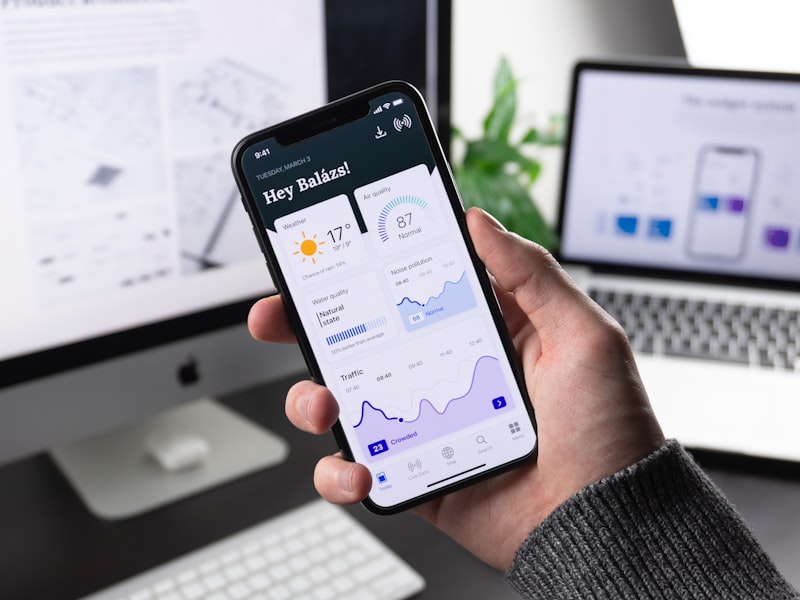Are you a marketer? Do you want to be a better marketer?
Then listen up. We've got some important things to tell you about storytelling.
Your job is to connect with people—to make them feel something, to make them believe in your brand, and ultimately to sell more stuff. But how do you do that?
That's where storytelling comes in! Storytelling is all about making connections between yourself and other people through the power of stories. There are tons of ways to use stories in marketing: from writing blog posts that show off different characters within your business, using videos of customers talking about their experiences, or even just telling stories about your company's history at industry events.
But if you want to get started with storytelling today, here are nine things marketers must know:
Why Stories Work
There are several reasons why stories are so powerful, but I'm going to focus on 3:
- They're more memorable than facts and figures. When you give people information in a narrative form—such as the tale of how your company was founded or the inspiring story of one customer's success with your product—they're more likely to remember what you've said.
- Stories are more persuasive than facts and figures. When you tell someone a story about how your product helped them solve their problem (and show them proof), they'll be more likely to buy into it than if they were just given numbers or statistics alone (which they can easily discount).
- Stories are more engaging than facts and figures. We live in an age where attention spans are decreasing rapidly; when we read or listen to something that isn't interesting or engaging enough for us, we have no problem tuning out until something catches our eye again later on down the line! That's why marketers need stories: because everybody loves stories! A good story will keep people engaged until it finishes; bad ones will make them switch off before too long!
Where to Find Good Stories
There are many different kinds of stories that can be used to tell your brand story. You may find them in your own life, you may find them in the lives of others, or you may find them in your business.
There are plenty of places to look for stories:
Your own life. If you’re struggling to develop an exciting narrative for your brand, think about all the experiences that have made you who you are today. What do those experiences say about who you want to be? What lessons did they teach? How can those lessons be applied to what it means to be a part of this company or organization?
The lives of others. Think about the people around you—friends or family members who inspire and challenge you—and consider how their perspective has shaped yours over time. How might these perspectives extend beyond personal relationships and into society at large? What could this mean for how we operate as a business community? A good example here would be how Starbucks has built its social media presence around its “social mission”: serving local communities by hiring veterans and working with suppliers who provide fair trade products like coffee beans harvested by small farmers living near rainforests across five continents.
What Makes a Story Good?
Here's what makes a story good:
A good story has a beginning, middle, and end. It sets the stage by introducing the characters and setting; it provides context on what the hero wants and resolves in some way that leaves us satisfied with the outcome.
A good story has a hero—someone who can be identified with or empathized with—and someone against whom we can root for our hero. The antagonist is often responsible for creating obstacles preventing our character from reaching his/her goal, which creates tension between them that keeps things interesting until resolution occurs in one way or another (often both).
When Should You Tell a Story?
When a company is trying to sell something, they want to do it in the most effective way possible. Stories are great for this!
- When you're introducing new products or services. If you want people to understand how your product can help them, telling a story about someone who used your product and benefited from it is an easy way to do that.
- When selling a company's culture. Whether it's through video or in person, there’s nothing better than hearing about the good things that happen at your company when someone tells a story of their experience working with you.
The benefits don't stop there! You can also use stories in:
- Explaining what value your product or service brings (this one isn't always necessary). For example: “We have been providing our customers with X for years now! And during that time we've learned Y…” Or “We know X because Z happened."
There's no such thing as a storytelling framework
There's no such thing as a storytelling framework. If you're looking for a pre-packaged formula that will help you create an engaging story, I'm afraid you're out of luck.
Storytelling is a process, not a formula. It's creative and unpredictable—not formulaic or predictable. It's an art, not science; the best stories come from experimenting with various approaches until one sticks and connects with people in some way. The best way to get started on building your own storytelling framework is to dive in and start experimenting with different ideas, techniques, and formats until something clicks for your audience—and then keep iterating from there!
Storytelling is not a step-by-step process
Some marketers think storytelling is a step-by-step process. They think it’s something they can just figure out and then execute, but it’s not. It’s a creative process that requires collaboration, iteration, and improvisation.
Storytelling is organic—it evolves organically over time through your team's experimentation and learning as you go along. It doesn't happen overnight; it takes time to learn what works and what doesn't work for your audience(s).
Storytelling is not just for brand narratives
Storytelling is a powerful tool that can be used to support a variety of marketing initiatives, including:
- Building your brand's image and reputation as an authority on its topic by giving people who know you something else to talk about with their peers (such as an ebook or white paper)
- Creating customer personas that are based on real human beings' stories instead of broad demographic data points (like age range, gender, income level, etc.)
- Expanding reach through social media by sharing the stories told by others within your community—as well as your own stories—to attract new people who might not have heard them yet
Stories are made of words and images-not just words.
The power of images is often misunderstood. While it's true that images can be used to illustrate stories, they can also be used to create them. And not just any image—a very specific image.
For instance, let's say you're trying to sell an expensive watch: You could write out a sentence explaining how wonderful the watch is, or you could show someone wearing the watch and looking happy as he hugs his wife at their anniversary dinner. The latter illustration would be more effective in getting your point across because it shows what life will look like with this purchase rather than just describing it in words.
The same holds true for storytelling as well; sometimes images are more effective at telling us what's going on than words alone would be able to do. For instance: Think about how many movies have been made where the protagonists are running around chasing each other in zero-gravity environments. If they were to use just the dialogue to tell us how scary it would feel if we were floating around like that; all we need is an image—and if done right, those images can change our perception of any story we encounter!
There's no one way to tell a story, but there are many useful ways to work with stories.
The idea of storytelling as a discipline is one that many marketers still don't get. They think that storytelling is just a way to tell stories, not realizing that the very act of telling stories requires some knowledge and skill.
Telling your client's story means finding out what kind of story they need to tell, who their audience is and how best to reach them, which mediums are most appropriate for their message (print? web video? social media?) when it's appropriate for them to share their message: now or later... there are many factors involved in telling a great story!
We've reached the end of our list of 9 things marketers don't know about storytelling, and we hope you've found it helpful!
Stories are everywhere in marketing—they're just not always obvious. The most effective brands are those that can tell their own stories, and they do so by making sure each element of their brand is connected to a larger narrative.
So don't be afraid to get creative with your storytelling! It's not as easy as just telling a story, but it's certainly more rewarding than telling a boring one.






